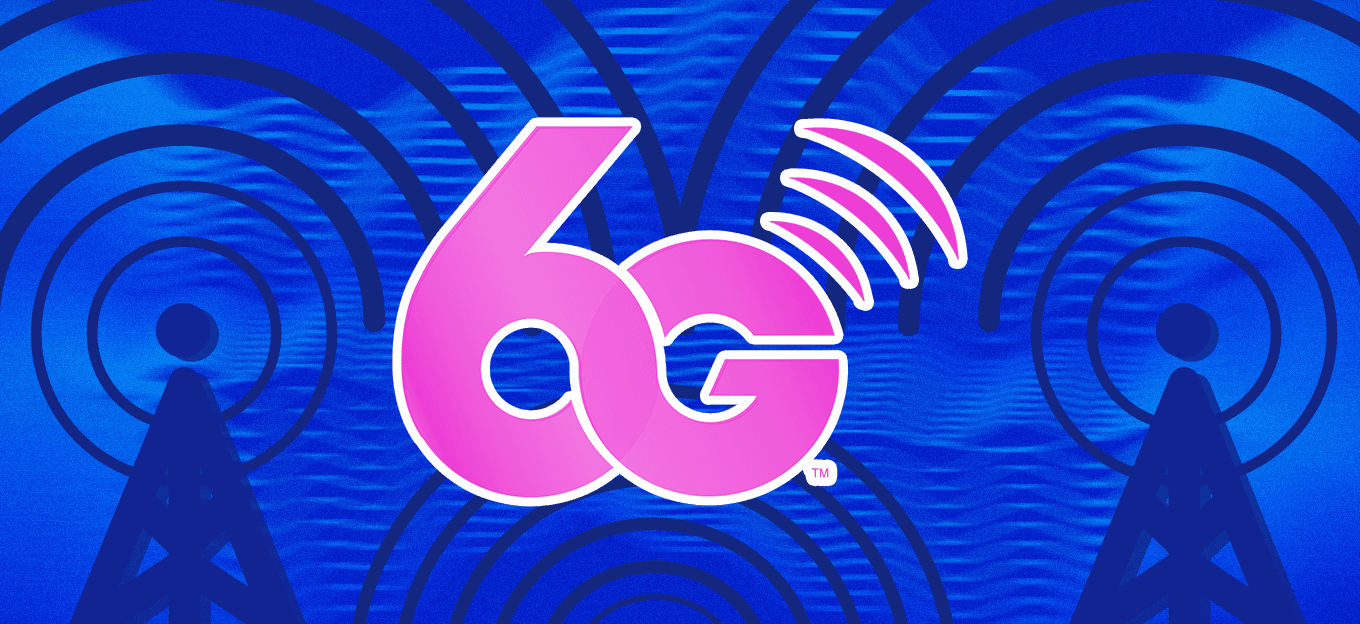The Road to 6G: Vision, Key Technologies, and Intelligent Network Evolution
The Road to 6G: Vision, Key Technologies, and Intelligent Network Evolution
- Last Updated: November 11, 2025
kevinzhang
- Last Updated: November 11, 2025



The sixth generation (6G) of wireless communication systems is expected to emerge around 2030, representing a major step beyond the fifth generation (5G) in both technological depth and societal impact. While 5G has successfully enabled enhanced mobile broadband (eMBB), ultra-reliable low-latency communication (uRLLC), and massive machine-type communication (mMTC), the next generation will move toward the deep fusion of communication, sensing, computation, and artificial intelligence (AI). The 6G network aims to realize true ubiquitous connectivity — a seamless integration of terrestrial, aerial, maritime, and space-based networks — to support the growing demands of intelligent automation, immersive experiences, and digital twins of the physical world.
Beyond faster data rates, 6G envisions a fully intelligent and adaptive system that autonomously manages spectrum, energy, and computing resources. It is expected to deliver data rates up to 1 Tbps, latency below 0.1 milliseconds, and energy efficiency several times greater than current systems. Such improvements will not only enhance the user experience but also enable a new class of applications where machines, sensors, and humans cooperate in real time.
Vision and Key Objectives
The vision of 6G is to build a ‘network of intelligence’ that connects everything — people, machines, vehicles, and even the environment. Unlike previous generations that focused mainly on connectivity, 6G integrates knowledge, learning, and context awareness into its core design. The objectives of 6G include ubiquitous coverage, ultra-high data throughput, extreme reliability, and built-in security. It will provide communication infrastructures for emerging technologies such as the Internet of Everything (IoE), holographic telepresence, autonomous robotics, and intelligent manufacturing.
Furthermore, 6G will redefine the boundaries between the physical and digital worlds. By enabling real-time synchronization between sensors, cloud computation, and AI algorithms, the network will allow ‘digital twins’ — virtual representations of real-world objects — to interact dynamically with physical systems. This capability will become essential in smart cities, industrial automation, environmental monitoring, and personalized healthcare.
Network Architecture: Space–Air–Ground–Sea Integration
One of the core concepts in 6G is the integration of space–air–ground–sea networks into a unified infrastructure. In contrast to 5G, which primarily relies on terrestrial base stations, 6G extends the coverage to satellites, high-altitude platforms (HAPs), unmanned aerial vehicles (UAVs), and underwater networks. This multi-layered topology ensures continuous and global service delivery, even in remote or extreme environments.
AI will serve as the ‘brain’ of this heterogeneous network, managing tasks such as resource allocation, mobility prediction, and fault recovery. Through the use of digital twins and network slicing, each service can receive tailored performance guarantees. For example, industrial automation systems can obtain deterministic latency, while environmental sensors may use low-power, delay-tolerant connections.
Key Enabling Technologies
To realize these visions, several foundational technologies must advance in parallel. Among them are terahertz (THz) communication, cell-free massive MIMO, reconfigurable intelligent surfaces (RIS), AI-native networks, integrated sensing and communication (ISAC), and quantum-secure communication. Each contributes uniquely to the overall 6G ecosystem.
THz communication will utilize frequencies between 0.1 and 10 THz to deliver unprecedented data rates and ultra-precise localization. However, due to high propagation loss, beamforming and adaptive channel modeling will be crucial. Cell-free MIMO departs from traditional cell boundaries by using distributed antennas that collaboratively serve all users in a region, improving fairness and spectral efficiency.
Reconfigurable intelligent surfaces consist of programmable meta-material panels that can control electromagnetic waves in real time, effectively turning walls, ceilings, and buildings into intelligent reflectors. These surfaces help overcome signal blockage, reduce interference, and improve energy efficiency. Meanwhile, integrated sensing and communication (ISAC) merges radar and communication systems to support simultaneous data transmission and environmental perception.
AI-native networks will automate optimization tasks using deep learning models, reinforcement learning, and federated intelligence. In 6G, AI will not only enhance operations but also become an inherent component of the physical layer, performing tasks such as channel estimation and waveform adaptation. Quantum communication will further guarantee unbreakable security by leveraging quantum key distribution (QKD) and post-quantum cryptography.
Application Scenarios
6G will unlock revolutionary applications across various sectors. In industry, smart factories will use 6G-enabled digital twins to simulate and control entire production lines with sub-millisecond feedback. Holographic telepresence will provide immersive communication experiences, merging the physical and digital worlds through ultra-high-speed and low-latency links.
In healthcare, 6G networks will enable real-time remote surgery, intelligent diagnostics, and continuous monitoring with high reliability. In transportation, autonomous vehicles and drones will communicate seamlessly using 6G’s vehicle-to-everything (V2X) framework, supporting intelligent traffic systems and cooperative perception. Furthermore, space exploration, maritime navigation, and rural broadband will all benefit from the global coverage provided by integrated satellite systems.
Challenges and Future Research Directions
Despite its ambitious vision, 6G research faces substantial challenges. Hardware limitations in THz components, power consumption of AI algorithms, and scalability of network intelligence remain open issues. Designing antennas, amplifiers, and channel models for THz frequencies demands new materials such as graphene and nanoscale semiconductors.
Security and privacy are also major concerns. As AI becomes deeply embedded, adversarial attacks and data manipulation could compromise system integrity. Therefore, explainable and trustworthy AI frameworks are needed. Moreover, energy efficiency and sustainability must be prioritized to minimize the carbon footprint of massive AI-driven infrastructure.
Standardization will play a crucial role in unifying global efforts. Early research from organizations such as ITU, IEEE, and 3GPP suggests that 6G will evolve through open collaboration between academia, industry, and government. Cross-disciplinary innovation — combining wireless engineering, photonics, AI, and quantum physics — will be key to overcoming the technological bottlenecks that currently limit practical deployment.
Conclusion
The journey toward 6G represents a profound transformation in the communication paradigm. By integrating space–air–ground–sea networks, leveraging terahertz frequencies, and embedding intelligence at every layer, 6G aims to deliver an adaptive, secure, and energy-efficient network capable of sensing and understanding its environment. It will become the foundation of future intelligent societies, supporting unprecedented levels of automation, efficiency, and human–machine collaboration. 6G will not merely connect devices — it will connect intelligence itself.
The Most Comprehensive IoT Newsletter for Enterprises
Showcasing the highest-quality content, resources, news, and insights from the world of the Internet of Things. Subscribe to remain informed and up-to-date.
New Podcast Episode

What is Hybrid Connectivity for IoT?
Related Articles


